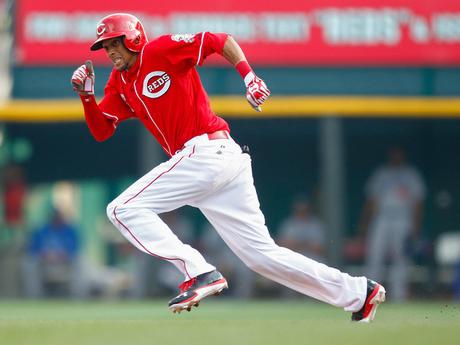Ever see a guy try to score from second base on a base hit and get thrown out by about six inches at home plate? Of course you have. Baseball is a game of inches and turn on any game on TV and you’ll see several plays where an inch one way or the other could have reversed the tide of the game.

One extra step can be all the difference.
My base running example above is one of many plays where fans really just concentrate on the end result. The out or safe call. As you know, because you are a reader of Baseball By The Yard, simply running from second base to home plate is not so simple. Many little things go into doing it right.
Today’s tip is one of the many little things that can mean the difference between safe by six inches and out by six inches …
With two outs and two strikes on the batter, the runner on second base should be told (or know) to start breaking towards third base as soon as he can see the batter start his swing. With two outs and two strikes, it makes no difference whether the batter hits the ball or not. If he misses it, it’s inning over. If he hits it then all runners go no matter where it is hit. Therefore, a sharp runner will start his jump as soon as he sees the batter’s hands come forward to start his swing. Doing so may allow the runner to get in a step towards third base before the ball is hit. One step is about a yard. (Hmmm … there’s that Baseball By The Yard thing again). Obviously, if a runner can get a yard head start then his chances of being safe at home on a base hit increase.
Nobody on the field or in the stands will probably notice what the runner did. However, when he is safe by six inches rather than out by six inches, the practice time spent on this will be well worth it.

